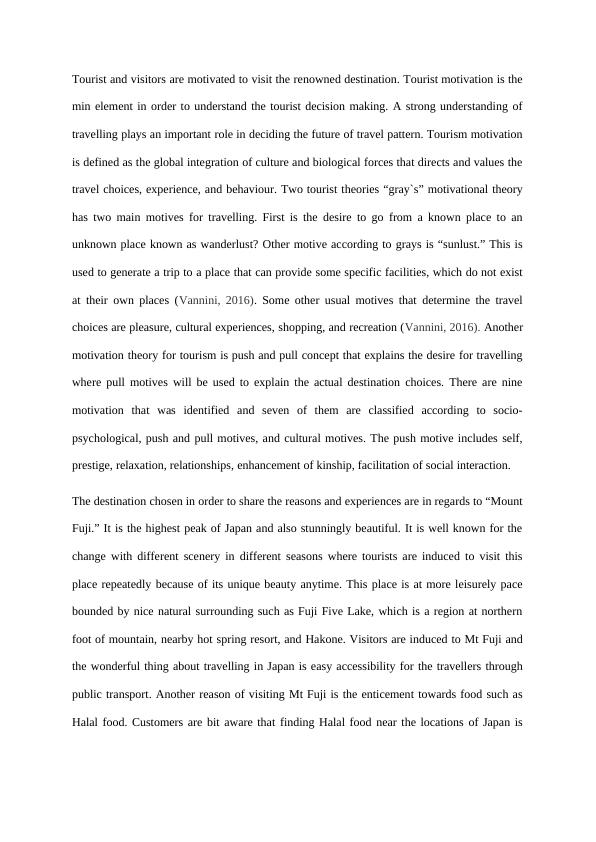Tourist Motivation and Stakeholder Participation in Mount Fuji Tourism
6 Pages1141 Words252 Views
Added on 2023-04-11
About This Document
This document discusses the tourist motivation and stakeholder participation in Mount Fuji tourism. It explores different motives for traveling, such as wanderlust and sunlust, and the push and pull concept. The document also highlights the role of stakeholders, including business operators, residents, and government agencies, in tourism development. It addresses ethical dilemmas faced by employees in the tourism industry and the impact of tourism on the environment and local culture. Additionally, it discusses the competitive advantage of Mount Fuji and the responsibility of stakeholders in promoting a clean and safe environment.
Tourist Motivation and Stakeholder Participation in Mount Fuji Tourism
Added on 2023-04-11
ShareRelated Documents
End of preview
Want to access all the pages? Upload your documents or become a member.
BBHM 101 : The Contemporary Hospitality & Tourism Industry
|7
|2288
|119
Motivation for Tourists to Visit Bali, Indonesia
|7
|1339
|307
Visitor Behavior in Snowy Mountains of Australia
|10
|1419
|339
Factors Motivates the Tourists for Travelling and Visiting Particular Location
|12
|2472
|16
Tourism Destination - Assignment
|7
|1946
|334
Visitor behaviour management of Sydney Opera House
|8
|1361
|412



